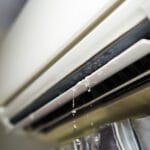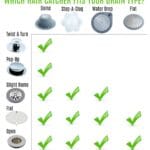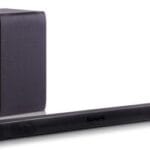To troubleshoot a Taylor thermometer, first, check the battery and ensure it’s properly installed. Next, verify the device is not exposed to extreme temperatures.
Taylor thermometers, renowned for their precision and durability, sometimes face operational hiccups. These issues can range from simple battery problems to more complex sensor malfunctions. Ensuring your Taylor thermometer functions correctly is crucial for accurate temperature readings, whether you’re cooking, baking, or monitoring weather conditions.
Troubleshooting common problems can often save you time and money, avoiding the need for immediate replacements. By following a few basic steps, you can quickly resolve most issues with your Taylor thermometer, maintaining its reliability for all your temperature measurement needs. Remember, regular maintenance and careful handling are key to extending the life of your device.

Credit: www.amazon.com
Introduction To Taylor Thermometer Issues
Taylor thermometers are essential tools in kitchens and labs. They measure temperatures with precision. But like all gadgets, they may face issues. Understanding these can help maintain accuracy and prolong their life.
Common Challenges Faced
Users of Taylor thermometers may encounter several problems. These can affect the device’s performance. Below are some frequent issues:
- Display errors: The screen may show incorrect readings.
- Battery problems: A dead or weak battery can cause malfunctions.
- Temperature inaccuracies: Readings may be off, affecting results.
- Water damage: Moisture can harm the thermometer’s internal components.
- Calibration: Over time, thermometers need recalibration to ensure accuracy.
Importance Of Accurate Temperature Readings
Getting the right temperature is vital. It ensures food safety, quality, and consistency. In labs, it guarantees precise experimental results. Thus, a well-functioning Taylor thermometer is key.
| Area of Use | Why Accuracy Matters |
|---|---|
| Kitchen | Prevents undercooked food and health risks. |
| Labs | Ensures reliable experiments and data integrity. |
Initial Checks Before Troubleshooting
Before diving into troubleshooting your Taylor thermometer, start with simple checks. These steps can solve common issues. Take a moment to perform these initial inspections.
Battery Inspection
Check the thermometer’s battery first. A low or dead battery often causes errors. Follow these tips:
- Open the battery compartment.
- Remove the old battery.
- Insert a new battery correctly.
- Ensure the compartment is secure.
Device Cleaning Tips
Keeping your thermometer clean prevents false readings. Use these simple steps:
- Turn off the device.
- Use a soft, damp cloth to wipe.
- Avoid harsh chemicals.
- Let the thermometer dry completely.
Calibration Techniques For Precision
Knowing how to calibrate your Taylor thermometer is key for precise measurements. This guide will show you the calibration techniques for precision. Whether you’re a professional chef or a home cook, these steps ensure your recipes turn out perfect every time.
Step-by-step Calibration Process
Follow this simple process to calibrate your Taylor thermometer:
- Fill a glass with ice and top it off with cold water.
- Stir well and let it sit for 3 minutes to reach a uniform temperature.
- Insert the thermometer stem into the ice water, making sure not to touch the sides or bottom of the glass.
- Wait for the thermometer to give a reading. It should say 32°F (0°C).
- If it doesn’t, find the calibration nut and adjust it. Turn it gently until the thermometer reads 32°F (0°C).
Calibrating your thermometer is quick and ensures your food is safe and delicious.
When To Recalibrate Your Thermometer
You might wonder when it’s time to recalibrate. Here are some signs:
- After dropping it: Accidents can affect its accuracy.
- Before first use: Ensure it’s ready right out of the box.
- When switching between extreme temperatures: Moving from hot to cold dishes? Recalibrate.
- Every month: Regular checks keep it precise.
Staying on top of recalibration keeps your cooking and baking accurate. It’s easy and takes little time.
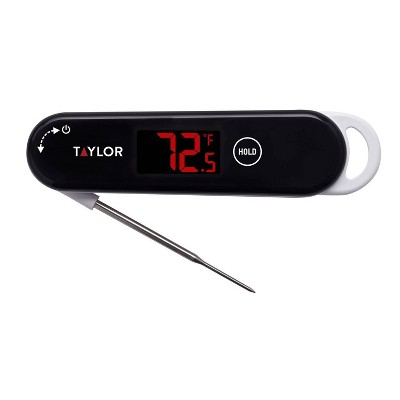
Credit: countryvision.org
Dealing With Erratic Temperature Readings
Thermometers are crucial for accurate temperature measurements. Taylor thermometers are reliable, but may sometimes give erratic readings. Let’s troubleshoot these inconsistencies.
Identifying Inconsistencies
First, observe the temperature readings. Do they fluctuate wildly? Note the patterns. Consistent inconsistency often points to a specific issue. Look for common signs like sudden jumps or drops in temperature readings.
Resetting The Thermometer
Resetting can often fix erratic readings. Follow these steps:
- Turn off the thermometer.
- Remove the battery.
- Wait one minute.
- Reinsert the battery.
- Turn on the thermometer.
Check the readings again. They should now be stable.
Resolving Digital Display Issues
Temperature checks are vital in many tasks. A clear display on your Taylor thermometer ensures accurate readings. Digital display issues can be frustrating. Let’s solve these common problems.
Troubleshooting Blank Screens
A blank screen on your Taylor thermometer needs quick attention. Follow these steps:
- Check the batteries: Replace if necessary.
- Reset the device: Find the reset button. Press it.
- Inspect for damage: Look for cracks or water damage.
Fixing Flickering Or Dim Displays
Displays that flicker or seem dim are common issues. Bright, steady readings are crucial. Try these fixes:
- Clean the battery contacts: Remove corrosion with a cloth.
- Adjust the contrast: If your model has this feature, use it.
- Check for nearby interference: Move away from electronic devices.
Contact Taylor support for help beyond these steps.
Water Damage And Prevention
Water Damage and Prevention is key to maintaining your Taylor Thermometer. This tool helps you measure temperatures accurately. But, it hates water! Let’s keep it safe and working well.
Addressing Moisture Intrusion
Moisture can sneak into your thermometer. This is bad news. It can stop your thermometer from working right. Here’s what to do:
- Dry it off quickly if it gets wet.
- Open it up to air out if possible.
- Put it in a dry place with lots of air.
Sometimes, you might need a new one. But trying to dry it first is a good step.
Protective Measures For Longevity
To keep your thermometer safe, follow these tips:
- Use a protective case. It’s like a raincoat for your thermometer.
- Keep it away from water as much as you can.
- Check the instructions. They tell you how to take care of it.
Remember, a happy thermometer gives you the right temperature!
Wireless Connectivity Problems
Wireless thermometers are handy in the kitchen. Sometimes they face connection issues. This can be frustrating. We will solve common problems with Taylor wireless thermometers.
Enhancing Signal Strength
Weak signals cause disconnections. Let’s boost your thermometer’s signal:
- Move closer: Shorten the distance between devices.
- Remove obstacles: Walls and appliances can block signals.
- Charge devices: Low battery can weaken the signal.
These steps should improve connectivity.
Pairing Devices Successfully
Pairing can be tricky. Follow these tips for a smooth process:
- Reset: Turn off the thermometer and receiver. Then turn them back on.
- Follow manual: Each model has specific pairing instructions.
- Update software: Ensure your devices have the latest updates.
Correct pairing ensures accurate temperature readings.
Temperature Probe Failures
When your Taylor thermometer starts acting up, the probe might be the issue. Temperature Probe Failures can cause inaccurate readings, a common problem for any kitchen thermometer. Let’s dive into how to maintain and replace these probes to keep your Taylor thermometer in top shape.
Maintenance Of Probes
Regular care ensures probes stay accurate and last longer. Here are some tips:
- Clean probes after each use with a damp cloth.
- Avoid immersing the probe in water.
- Keep probes away from direct flame or extreme heat.
- Store your probes safely to prevent damage.
Following these steps helps prevent common probe issues.
Replacement Options
Sometimes probes fail despite good care. Here’s what to do:
- Check your thermometer’s warranty for potential replacements.
- Buy genuine Taylor replacement probes for compatibility.
- Follow the user manual to connect the new probe correctly.
Choose the right replacement to get back to accurate temperature readings.
Warranty And Repair Information
When your Taylor thermometer starts giving trouble, it’s essential to know your options. Warranty and repair services can help. Let’s dive into understanding your warranty and how to reach customer support.
Understanding Your Warranty
Most Taylor thermometers come with a warranty. This warranty often covers manufacturing defects. It lasts for a specific period from the purchase date. To check the details, locate your product’s warranty information. It’s in the user manual or online. Keep your proof of purchase safe. You will need it to claim your warranty.
- Check warranty period – It varies by product.
- Save the receipt – Necessary for claims.
- Read terms carefully – Know what’s covered.
Contacting Customer Support
If you need repairs or have warranty questions, contact Taylor customer support. They offer guidance and solutions. Have your product model and purchase details ready. This speeds up the process. Use the contact form on their website or call their support number.
- Prepare product details.
- Use online form or phone.
- Describe the issue clearly.
Remember, customer support is there to help. They will guide you through the next steps. Whether it’s a repair or a replacement, they’ll provide the necessary assistance.
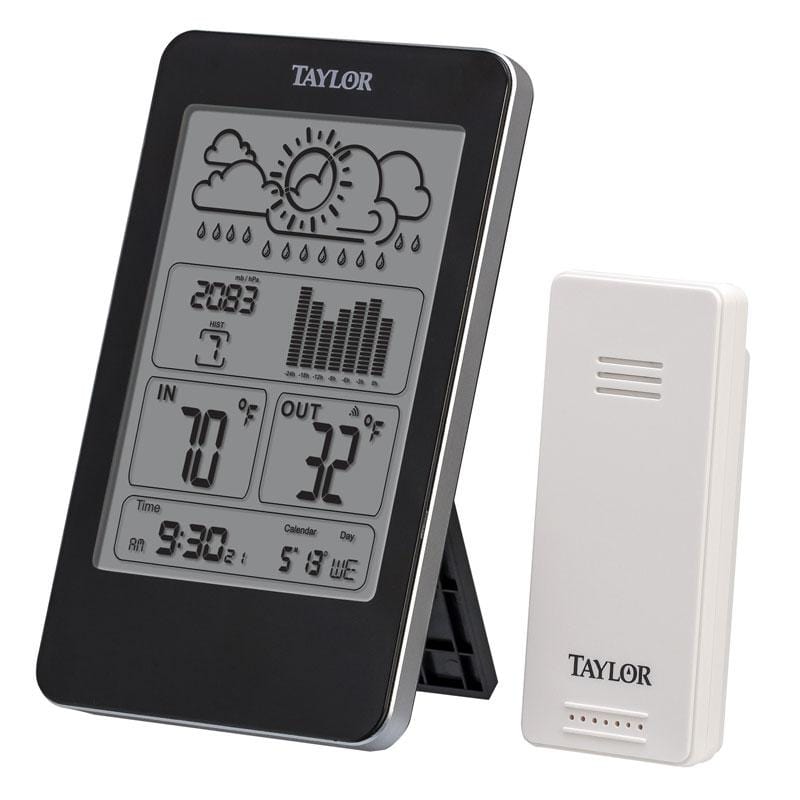
Credit: www.taylorusa.com
Advanced Troubleshooting Techniques
When your Taylor thermometer starts acting up, basic fixes sometimes don’t cut it. It’s time for advanced troubleshooting techniques. These methods delve deeper into the problem. They often fix issues when nothing else works. Let’s explore how diagnostic tools and professional repair services can help.
Using Diagnostic Tools
Diagnostic tools are essential for advanced troubleshooting. They pinpoint problems accurately. Follow these steps:
- Get the right diagnostic tool for your Taylor model.
- Follow the manufacturer’s instructions to use it.
- Record the error codes it displays.
- Refer to the manual for code meanings.
- Apply the recommended fixes based on the codes.
These tools often reveal hidden issues. They make troubleshooting more effective.
Professional Repair Services
Sometimes, you need an expert. Professional repair services offer:
- Expert assessments
- Precision repairs
- Warranty on service
Contact a certified technician if problems persist. They have the skills and parts to fix complex issues. Your thermometer will work like new again.
Preventative Care For Long-term Use
Preventative care ensures Taylor Thermometers measure accurately for years. Regular maintenance and proper storage are key. Follow these tips to keep your device in top shape.
Routine Maintenance Schedule
Maintain your thermometer to avoid sudden failures. Set a routine schedule:
- Monthly: Clean the probe and body. Use a soft cloth.
- Quarterly: Test accuracy with an ice bath. Adjust if needed.
- Biannually: Replace batteries. Even if it’s still working.
- Annually: Inspect for wear and tear. Replace damaged parts.
Best Practices For Storage
Store your thermometer correctly to extend its life:
- Keep in a cool, dry place. Avoid direct sunlight.
- Remove batteries if not used for a long time.
- Hang or lay flat in a protective case. Avoid bending the probe.
Conclusion: Ensuring Reliable Measurements
Taylor Thermometers are key for accurate readings in kitchens and labs.
Getting reliable measurements ensures safety and quality. We aim for accuracy every time.
Recap Of Solutions
- Check the battery first. A weak battery gives wrong numbers.
- Clean the thermometer. Dirt affects its accuracy.
- Calibrate often. It keeps readings right.
These steps help fix most issues. They make the thermometer work well again.
Future Considerations
- Store properly. Keep it in a cool, dry place.
- Read the manual. It has important tips.
- Update regularly. New models have better features.
Thinking ahead keeps your thermometer ready. It ensures precise results always.
Frequently Asked Questions
Why Is My Taylor Thermometer Not Accurate?
Taylor thermometers may become inaccurate due to battery issues, exposure to extreme temperatures, or damage to the sensor. Regular calibration is recommended.
How To Reset A Taylor Digital Thermometer?
To reset a Taylor digital thermometer, remove the battery, wait for one minute, then reinstall the battery to restart the device.
Can Taylor Thermometers Be Calibrated?
Yes, many Taylor thermometers can be calibrated. Specific models come with a calibration feature, which is outlined in the user manual.
What To Do If Taylor Thermometer Doesn’t Turn On?
Firstly, check and replace the batteries. If it still doesn’t turn on, ensure the battery contacts are clean and properly aligned.
Why Does My Taylor Thermometer Show ‘lll’ Or ‘hhh’?
‘LLL’ or ‘HHH’ on a Taylor thermometer indicates a temperature reading that is lower or higher than the device’s range. This could be due to a malfunction or extreme temperature exposure.
How To Fix A Taylor Probe Thermometer?
If a Taylor probe thermometer is not functioning properly, ensure the probe is fully inserted and the connection is secure. If issues persist, the probe may need replacement.
Conclusion
Wrapping up, Taylor thermometer issues can often be solved with simple fixes. Always check your manual and maintain your device regularly. Remember, accurate temperature readings are crucial, whether in the kitchen or for weather tracking. For persistent problems, reach out to customer support.
Stay precise and stay informed!


